As a blogger of the history of fashion, I am always interested when I see a surge of interest in a particular trend of the past. One such thing that I’ve noticed is the attention given to the hair jewelry of the Victorian era. While such pieces have been on display in museums and passed down through families for a century, people seem to have taken more notice in the past several years, often with a large dash of distaste to go along with their fascination. I have always loved to view hair work and it is my favorite exhibit at the Daughters of Utah Pioneers Museum, so I have enjoyed seeing it discussed and am gratified to see artists and historians paying it the respect it deserves. There is a lot of misinformation about this antiquarian art, and a lot to know. So let’s dive in and take a look.
Hair jewelry starts trending
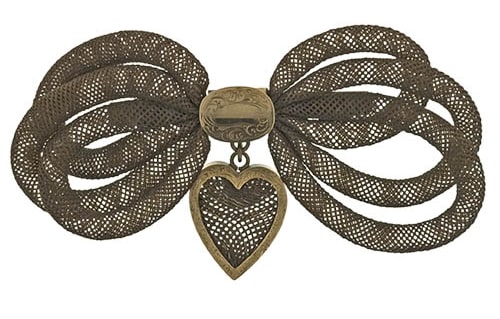
Though many like to point to Queen Victoria’s own collection of jewelry made from the hair of her beloved Prince Albert as a cause for the skyrocketing of interest in items made from hair, I think there is more to it than that. Victorians were highly sentimental, highly romantic, and hugely emotional for a variety of reasons that extend past Queen Victoria as a trendsetter. The idea of keeping a piece of a loved one close seemed like an ideal way to remember someone that extend beyond the Queen or the so-called Victorian “cult of mourning.”
It is also important to point out that while some jewelry was made using the hair of those who had passed on, this was a portion, perhaps even a small portion, of the hair work of the time. Despite what some blogs may claim, the majority Victorian hair work was made from the hair of living loved ones, especially children and lovers. As we saw in my post on the friendship book, hair was often given as tokens of affection in the 18th and 19th centuries.
Whatever the reason, the interest and demand for jewelry and art made from human hair trended big time in the mid to late 19th century. The trend proved so widespread that hair work became a popular DIY project of the time, as we will see.
DIY hair work
Hair art became so popular that people in Victorian England, America, and other parts of Europe started to play with DIY projects at home. I was delighted to find an instruction manual from 1867 titled Self-instructor in the Art of Hair Work, Dressing Hair, Making Curls, Switches, Braids, and Hair Jewelry of Every Description. This book is a gem!
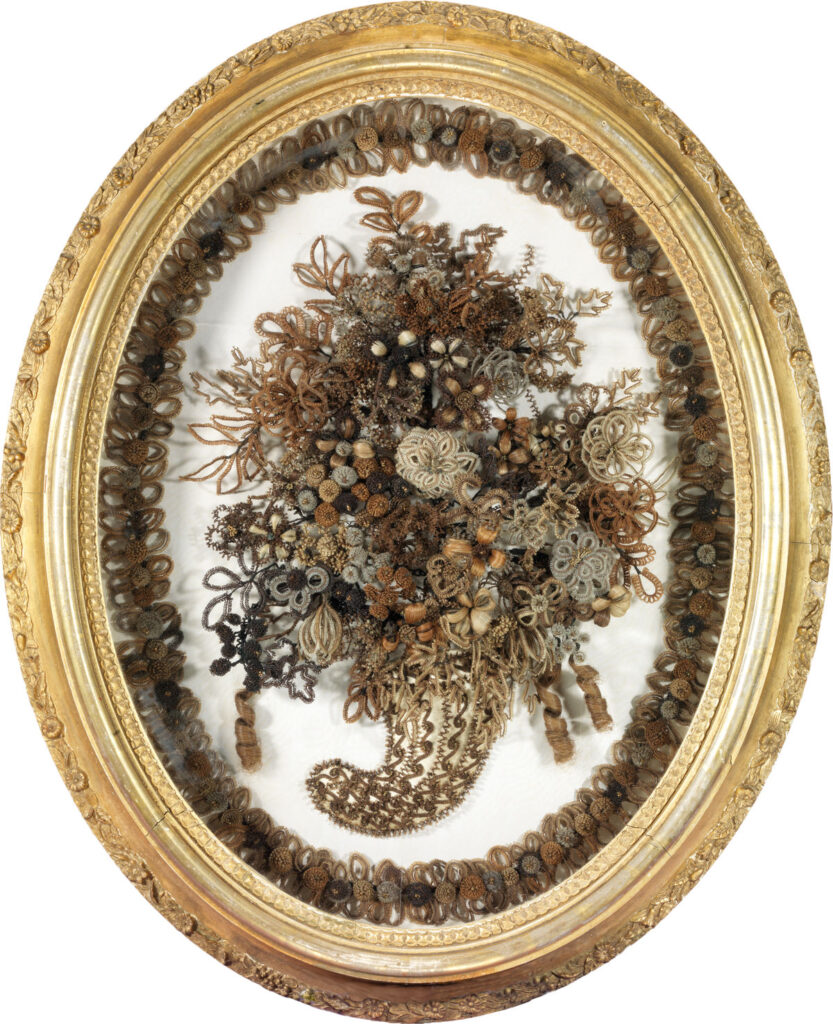
To give you an idea of the popularity of the pastime consider the very first paragraph of the introduction:
“The necessity for a comprehensive work, giving a full and detailed explanation of the Art of manufacturing Hair Work in all its various branches, has been so frequently urged upon the attention of the author, that, in the compliance with an almost universal demand, he has concluded to publish a book which will clearly illustrate the Art of Hair Dressing, and making Hair Jewelry and Hair Work of every description.”
There were four main types of hair work, some covered in the book. They were:
Table work
Designs that resemble lace or braids are done by table work and in many cases use similar tools as one would use in lace or Japanese braiding. Below is an image from Self-instructor in the Art of Hair Work of the author creating a piece with this method.
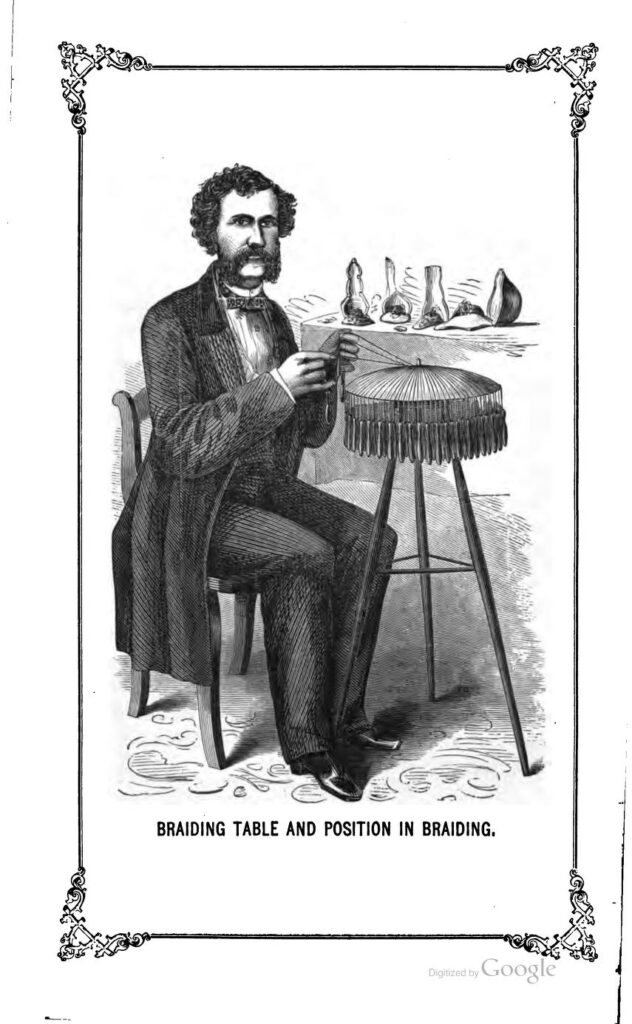
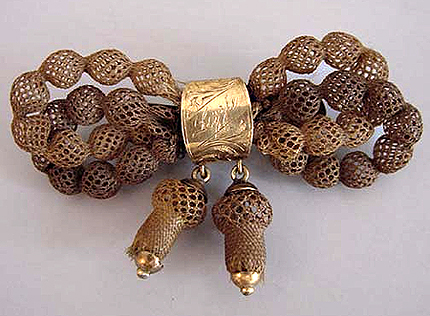
Palette work
Hair is placed on a flat surface and shaped into abstract shapes, landscapes, and other elaborate images. Below is one of my favorite images of hair work, done with the palette technique.
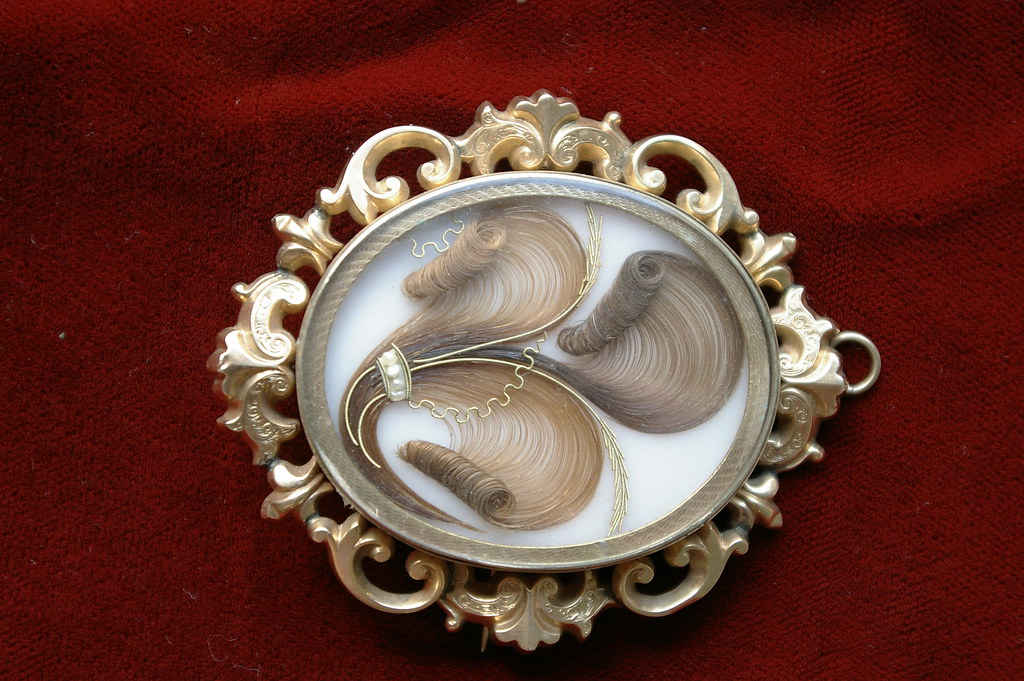
Hair flowers
Hair is wrapped around wires to create the tight and moldable strands used in the framed hair wreaths that were so common for the time.
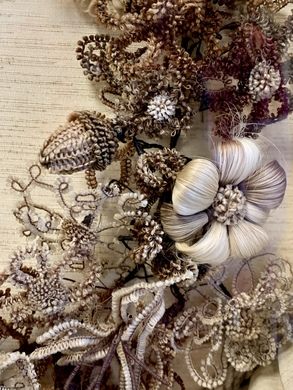
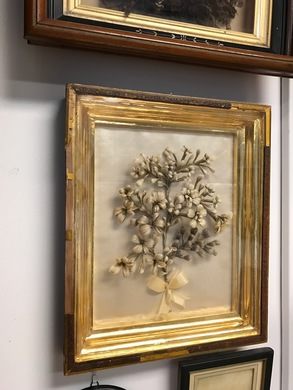
Sepia paint
The hair is crushed into paint and then used to create images like the ones below.

What is your favorite type of hair work?
Preparing hair for art
So, if Victorians were making so many pieces of art out of their own hair, how was it being collected and saved? Let’s take a look.
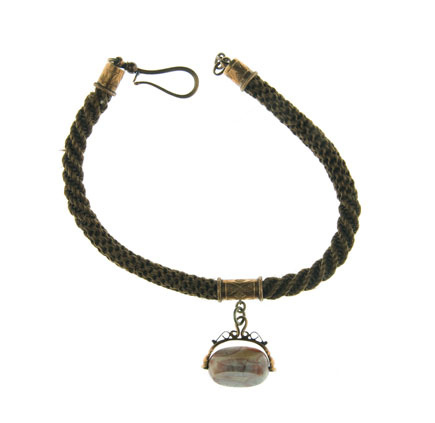
Perhaps you are familiar with “hair receivers”, tiny ceramic pots kept on the dressers of many Victorian ladies. If you are, you may have, like me, been told or been under the impression that these dainty containers were meant to collect hair to later be used in hair work. However, when researching for this post I discovered that is not the case, as the hair kept in receivers would naturally become tangled, making it unsuitable for hair work. Instead, when intending to have a piece made the hair would be cut from the head for that purpose. The hair receivers were used for entirely different purposes that I may cover in a future post.
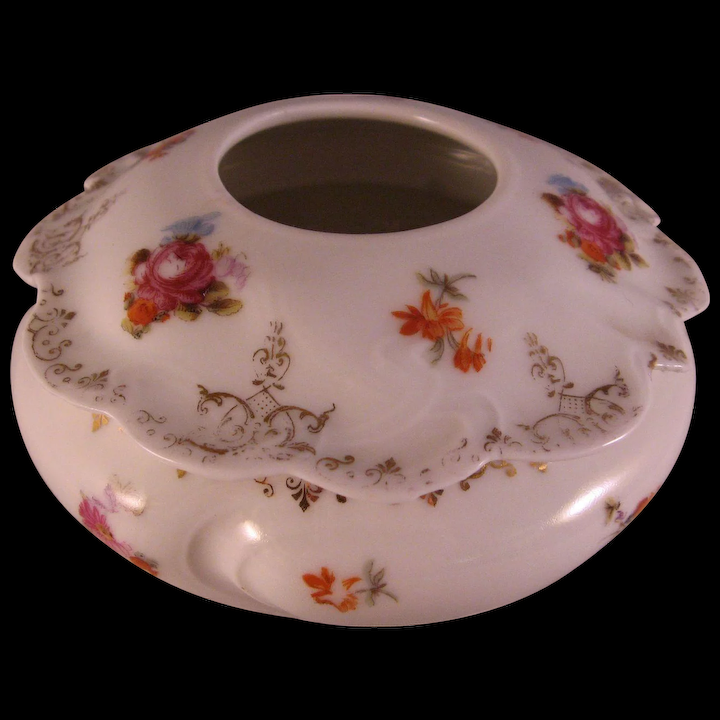
When the time came for the construction to begin the cut hair would be cleaned and prepared. This is the part I don’t think I’d have an easy time with. The following are instructions from an 1850s issue of Godey’s Lady’s Book:
“Sort the tress, which is about to be used, into lengths, tie the ends firmly and quite straight with pack thread, put the hair into a small saucepan with about a pint and a half of water, and a piece of soda of the size of a nut, and boil it for a quarter of an hour or twenty minutes; take it out, shake off the superfluous moisture, and hang it up to dry, but not near a fire.”
“When it has become perfectly dry, divide it into strands containing from twenty to thirty hairs each, according to the fineness of the hair or the directions given for the pattern about to be worked. It must be observed that every hair in the strand should be of the same length, and the strands should be all of an equal length.”
Then, create away.
Hair jewelry falls out of fashion
As the Victorian era came to a close society rapidly changed. Costume jewelry started to be massed produced and many people simply wanted to modernize, quickly viewing the trends of the past several decades as old-fashioned. While that seems reasonable enough to me, over the years it also came to be viewed as “creepy” and as this Vice post refers to it “Sick but true.”
Bringing it back
While preserving human hair in art form may not be for everyone, I think it is a mistake to label it and those who treasured their hair art in derogatory terms such as “creepy.” I’m not alone. Along with the interest in the history of the tradition has come artists who are bringing the it back. I may not venture into the work myself (though you never know), but I have been thrilled to learn about these modern hair work jewelers. Below are a few of the most active hair artists that I’ve discovered so far.
Courtney Lane
Insurance broker turned jewelry maker Courtney is in so much demand that she has an ongoing wait list for her commissions. She also teaches online classes, has a fun YouTube channel, and sells tutorials. Learn more:
Gina Lacovelli
Gina Lacovelli is the founder of Mementos Entwined; “a bespoke jewelry line with a focus on honoring the depth of love, through the acknowledgment of the brevity of life.” She learned to create hair art using the instruction guides found in women’s magazines of the 19th century and now creates pieces that are just as beautiful as those made back then.
She also has an upcoming webinar on hair art techniques that I am totally signed up for.
Learn more:
Karen Bachmann
Professor Karen Bachmann of Pratt Institute teaches classes on the art of hair work that receive a lot of attention. With a tiny sprinkle of the morbid, she is doing an amazing job of keeping the art form alive.
Learn more:
I was also thrilled to come up with this DIY video
Leila’s Hair Museum
And last but not least, if you are every near Independence, Missouri after the pandemic settles, please, please visit Leila’s Hair Museum. It is absolutely on my list of places to visit when I finally do the cross-country road trip I’ve always dreamed of. If you do go, please let me know so I can write about your visit!
So, what do you think? Creepy or cool? Yay or nay? Bring it back, or keep it in the past? I’d love to know how you feel about hair jewelry or if you’d wear it today.

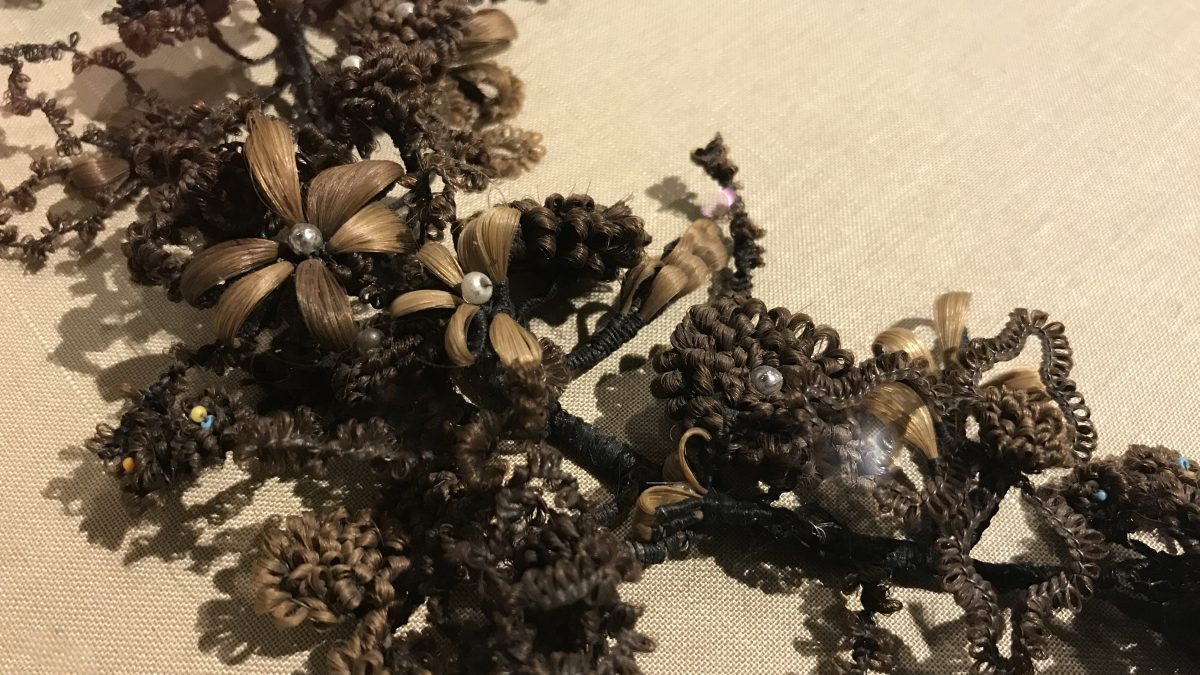


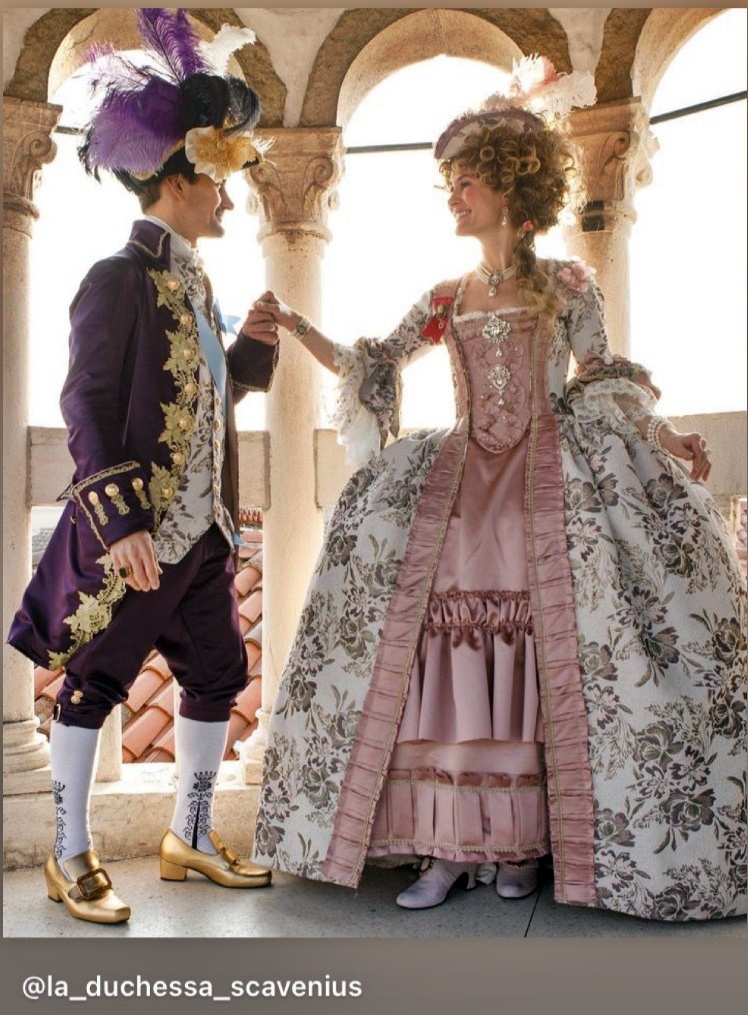
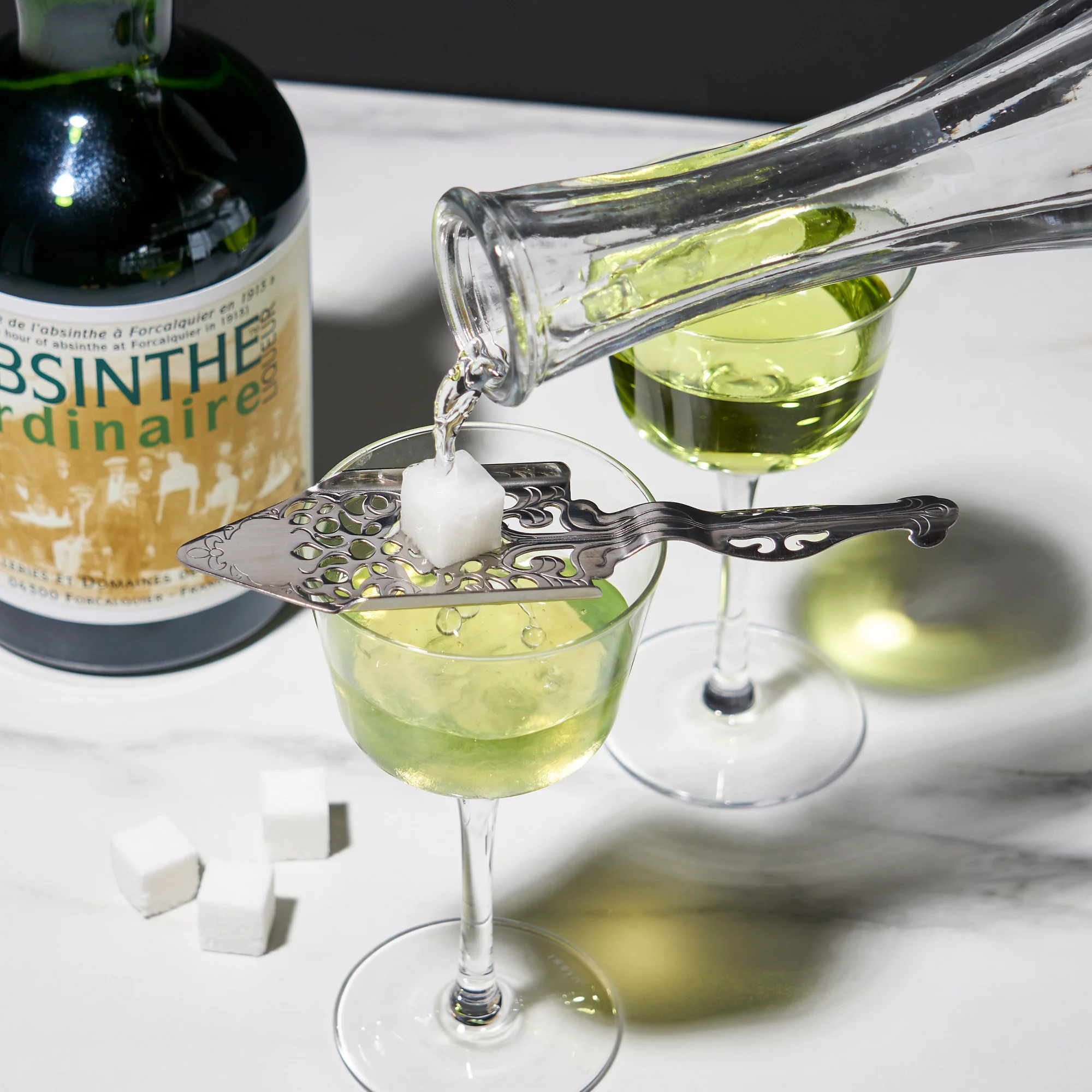



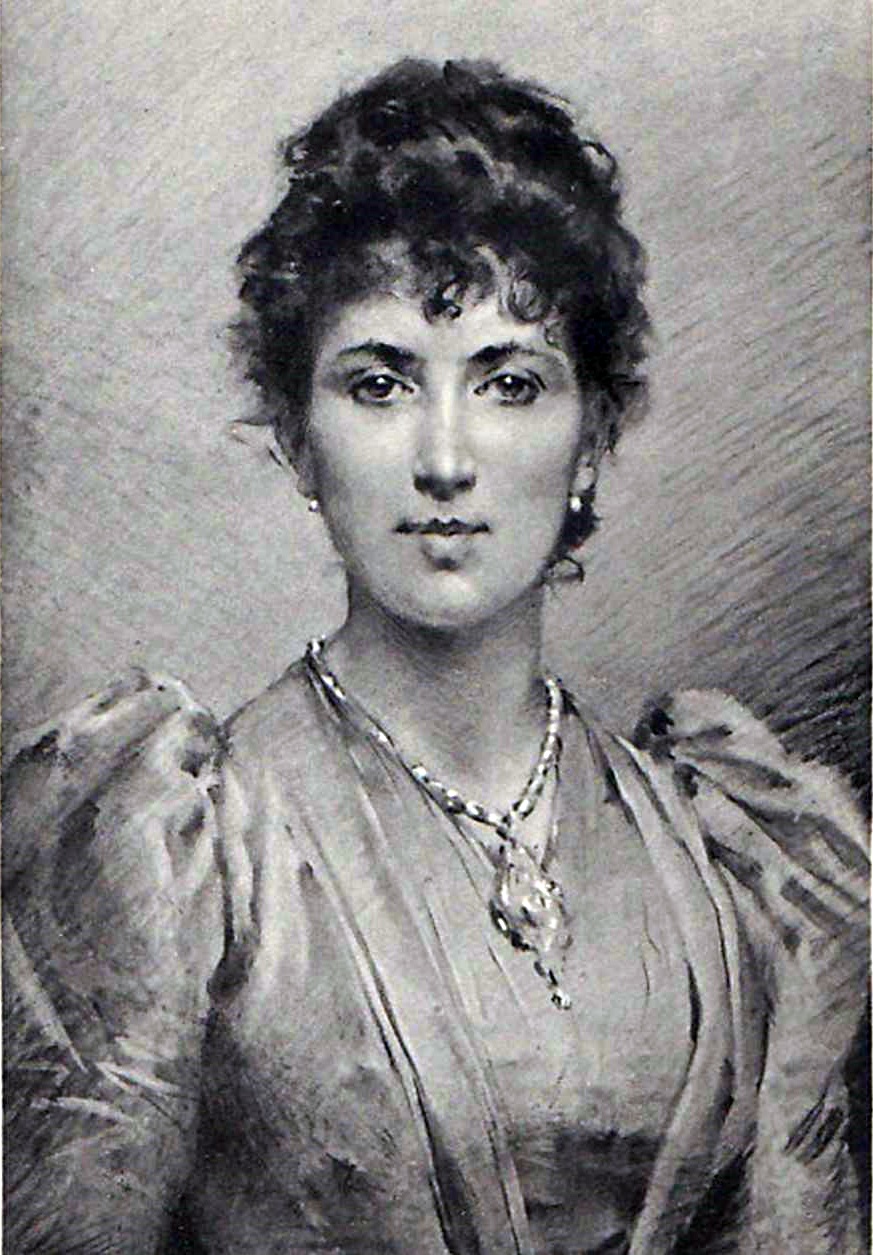




I have a watch fob my great-grandmother made using her own brown hair. I only knew her when she had white hair so I cherish it.
I have a bracelet that was my Great Great Grandmother’s that needs one of the bracelet toggles reattached. I am going to put it in a shadow box with her parasol and cameo – holing to make it a keepsakes to hand down… anybody know who works on these vintage items? I’m in Illinois.
I enjoyed reading your article on Victorian hair jewelry.. I currently have 6 pieces that going to post on eBay. While researching I came across your article. Even though I would not wear any, they are exquisite pieces of art. I purchased mine at an estate sale many years ago because they are so beautiful. Thank you for sharing that information. The sepia work is very interesting and appealing.
Thank you for posting this. I have been a hair dresser for 42 years, and find hair to be very fascinating. It is amazing what you can do with it. After styling it for years, you can get it to do whatever you want it to do.
Loved your interest and research.
I love the hair used in the Palette jewelry. The way the hair is shaped is stunning.
I am so glad you liked it! I have been happy to find so many people who find it beautiful and interesting rather than creepy!
Thank you for this wonderful article! I’ve been fascinated with hair art for a long time, and every time I mention it to someone else they are completely creeped out. I however think it is beautiful and so interesting. Its nice to know others are interested as well! In Victorian Times, many people gave locks of hair to those that they cared about, because photography was not yet common. Most people did not have photographs of their family members or loved ones and would exchange locks of hair as ways to remember. When photographs became more easily obtainable, people stopped giving locks of hair.
Thank you so much for reading!
Years ago, I thought this art was Creepy!! But the examples you have shown are quite intriguing. My grandmother, (Janice’s great great grandmother) had a hair receiver on her dresser. It was quite plain and made of celluloid, what we had before plastic. The hair she saved there was not used for making pictures but for something very interesting that perhaps Janice is going to describe at a future time! I loved the examples used in your article, especially the “flowers” were imaginative.
Thank you for all this research!
While this art may seem strange to some, we have to admit it is quite ingenious!
Yay! I have a few pieces that I love to wear when conducting walking tours in Atlanta’s Oakland Cemetery. I always get interesting comments when I explain the significance. I did not realize how common it was to use hair from living persons. Thank you for the reference information.
Being a hair dresser, hair has always been very special to me. Once on vacation we went into a store that had some on display and it was so interesting to me. Also a crafter I have always wanted to make something for myself. Now I have to get that book! Some of the works are exquisite, in their design. Would love to own one. Thank you so much for posting this to your bog.It is so interesting to me.
I’ve found hair art to be absolutely fascinating ever since I saw a piece in a museum as a teen. I’ll admit, at first I was somewhat creeped out and yet utterly charmed and intrigued. As someone who does a variety of hand needlework I now especially appreciate the work involved in creating these exquisite works of art!
I wonder why people find this kind of artwork creepy. People keep a lock of their baby’s hair and have no issue with it. As another poster here noted, people use horsehair decorations. The hair on a loved one’s head is frequently touched and caressed. So why is there an issue with art created from human hair?
Thank you so much for writing this article on such an interesting subject, and including so many photos!
Janice, I was so surprised to read this article as I know hair art isn’t well known. However, I work at the Stagecoach Inn Museum in Newbury Park, California where we have devoted a room to display the hair art that was collected by Andrea Tice. One third of her collection is at our museum and the other two thirds is at the Pacific Design Center in Los Angeles. Her collection was deemed equal to that of the Smithsonian Institute in Washington, DC. It is always interesting to see how people react to it!
Thank you for a wealth of education, links, excellent article.
I have enjoyed this immensely!
I own a lovely antique French mourning hair wreath. It features beautiful white-blonde hair formed into flowers and a cross, and reads (written in hair) “Pierre Mercier 9 Fevrier, 1900”. I often find myself wondering just who Pierre Mercier might have been, and though I’ll probably never know, I still feel honored to own this piece of him. At the very least he must have been quite loved for someone to have made such a beautiful and intricate work of art in his memory <3
I don’t find hair jewelry creepy at all. As a horse owner, I have saved locks of their hair over the years and like other horse people, when beloved equine dies, it is still a common practice to save the forelock and/or tail. There are a handful of people who make and sell horsehair key chains and jewelry.
I also understand why people from the Victorian period liked to have keepsakes like a loved ones hair. It is a very personal item and when my mother passed away, I was unable to save a lock of her hair but then I remembered that she had saved both my hair and a lock of hers in my baby book when I was born.
Nay. A definite NAY from me!